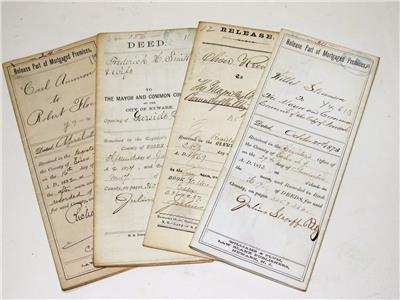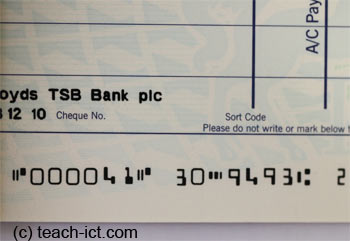
Next, you’ll take the total of the sales column and post it to the general ledger in the cash account as a debit. First, you will post the total of the cash column to the general ledger in the cash account as a debit. But, to give you an idea of the format, here is a sample cash receipts journal.

As the example shows, a typical cash receipts journal consists of many columns. This is necessary because there are numerous transactions that lead to the receipt of cash. Departments remain responsible for reconciling their merchant accounts and their cash and check deposits, ensuring that all transactions are recorded properly to the general ledger. Use the “Cash Management” journal source to identify the automated transactions on an Account Analysis report. Credit sales and sales made on account are not usually recorded in this journal because there isn’t any cash collected in these transactions.
What should be recorded in cash receipt journal?
For example, the cash sale on June 1 is recorded in the cash receipts journal by first entering June 1 in the date column. The amount of $506 is then placed in both the cash debit column and the sales credit column. On the basis of above transactions, draw up a cash receipts journal for Steward Inc. and post the same to relevant accounts in general and subsidiary ledger. When a retailer sells merchandise to a customer and it collects cash, this transaction is recorded in the cash receipts journal.

Credit memos, prepayments,
out-of-balance entries, and general ledger adjustments are also shown. Cash receipts journal is considered as the separate part of Cash account/cash book as it records the cash inflow of the business. There may be a large number of entries into this journal, depending on the frequency of cash receipts from customers. Cash Basis Accounting is a type of accounting whereby all of the company’s revenues are recognised upon actual cash receipt and all of the expenses are recognised upon payment.
You can stuff your receipts into one of our Magic Envelopes (prepaid postage within the US). Use our receipt tracker + receipt scanner app (iPhone, iPad and Android) to snap a picture while on the go. Note that whenever there is more than one split account, the report will show the word SPLIT in the Split column. FundsNet requires Contributors, Writers and Authors to use Primary Sources to source and cite their work.
What Is a CR Cash Receipts Journal?
The ledger sorts and groups accounts from the journal’s business transactions showing the summaries and totals of each individual income and expense account in the receipt ledger. A cash receipts journal is used by companies to record all cash received from any source. Your cash receipts journal should have a chronological record of your cash transactions. Using your sales receipts, record each cash transaction in your cash receipts journal. You calculate your cash receipts journal by totalling up your cash receipts from your accounts receivable account. The cash receipts journal is used to track transactions where a shop or wholesaler sells products to a customer and receives payment in cash.
Whole Foods shoppers on TikTok use extreme couponing at the grocery once known as ‘whole paycheck’ – Business Insider
Whole Foods shoppers on TikTok use extreme couponing at the grocery once known as ‘whole paycheck’.
Posted: Thu, 17 Aug 2023 21:37:00 GMT [source]
Ensure protection is maintained on the cash receipts pages unless changes are being made to the format of the receipts. After making changes reestablish the protection on these pages to insure the integrity of the receipt pages. The entire cash receipts journal file should be password protected and backed up daily to insure that cash receipt journal transactions are not altered or lost.
It also helps to keep track of the cash sale of items when the cash is received. When a customer purchases inventory on credit, the sale isn’t directly recorded in the cash receipts journal because no cash has actually been collected. Instead, the accounts receivable account is debited and the sales account is credited. When the credit customer returns to pay off his account, cash is collected however. A common error made when posting entries from a cash receipts journal is to forget to post the individual amounts in the accounts receivable column to the subsidiary ledger accounts receivable. This can cause the customer’s account to be inaccurate and may result in the customer being overcharged or undercharged.
The Cash Receipts Journal can be subdivided into different sections as well. For example, many companies want to know and evaluate the amount of cash they collected from sales, credit customers, and other sources. In the debit column of a cash receipts journal, there will always be a cash column and, in most cases, a column for sales discounts.
Cash Receipts Journal
Typically cash receipt journals are used by corporations to record the money they have collected. These transactions include cash transactions, acquiring funds through a loan, payments through customer accounts or sale of assets. They are an efficient way of keeping track of all the cash received during an accounting period. They aid in the preparation of the cash flow statement and the cash receipt ledger.

This includes cash sales, receipt of funds from a bank loan, payments from customer accounts, and the sale of assets. If the Job Cost module is integrated with Accounts
Receivable, the job-related entries reflected on the journal include the
job number and retention applied, if any. During the update process, the
cash receipts information for job-related invoices is updated to the Job
file and the Job Billing History file.
Disadvantages of a Cash Receipts Journal
The total from each column in a cash receipts journal is posted to the appropriate general ledger account. In addition, the post reference “cr” is recorded to indicate that these entries came from the cash receipts journal. Again, in the general ledger accounts, the post reference “CR-8” is recorded to indicate that these entries came from page 8 of the cash receipts journal. The debit columns in a cash receipts journal will always include a cash column and, most likely, a sales discount column.
The balance in the journal is regularly summarized into an aggregate amount and posted to the general ledger. When a company receives a loan from a bank, a transaction is performed in the cash sales collections journal to record the loan. The cash receipts journal ignores the accrual basis of accounting, which serves as the foundation for sound accounting and double-entry bookkeeping. There is only one real disadvantage of using the cash receipts journal. And that is that it only takes into consideration the cash basis of accounting. The cash receipts diary also contains information on any additional loans that a person has taken out from banks or other financial institutions.
Let’s assume that in the month of January, the BigSale Retail Company performed the following transactions and recorded them in their cash receipts Journal. Use Cash Receipts Journal as an audit trail to check
the accuracy of the data entered using Cash
Receipts Entry. The entries reflected may include receipts against
invoices, debit memos, and finance charges.
Ask a question about your financial situation providing as much detail as possible. Our team of reviewers are established professionals with decades of experience in areas of personal finance and hold many advanced degrees and certifications. At Finance Strategists, we partner with financial experts to ensure the accuracy of our financial content. The articles and research support materials available on this site are educational and are not intended to be investment or tax advice.
- Departments remain responsible for reconciling their merchant accounts and their cash and check deposits, ensuring that all transactions are recorded properly to the general ledger.
- Cash receipts, on the other hand, serve as documentation of a cash sale from the cash received for your company.
- When a customer purchases inventory on credit, the sale isn’t directly recorded in the cash receipts journal because no cash has actually been collected.
- Your cash receipts journal should have a chronological record of your cash transactions.
- The cash receipts journal is used to track transactions where a shop or wholesaler sells products to a customer and receives payment in cash.
The DR (debit) Other column would be handled a little differently as you need to look to the account column to find out where these individual amounts should be posted. In this case, we would post a $200 debit to merchandise inventory and a $300 debit to utility expense. Under the periodic inventory method, the July 6 shipping costs would go to a Transportation In account and the July 25 discount would go to Purchases Discounts. Because you have already received the cash at the point of sale, you can record it in your books. Again, you must record a debit in your cash receipts journal and a credit in your sales journal. At the end of the month, the different columns in the cash receipts journal are totaled.
The offices of University Accounting and University Treasury are working to automate these deposits. In terms of details, the journal entry would include additional information such as a date column, amount total, account number (if applicable), and so on. To make sure you have cash receipt accounting down pat, check out the examples below. Caryl Ramsey has years of experience assisting in different aspects of bookkeeping, taxes, and customer service. She uses a variety of accounting software for setting up client information, reconciling accounts, coding expenses, running financial reports, and preparing tax returns. She is also experienced in setting up corporations with the State Corporation Commission and the IRS.
What is the approximate value of your cash savings and other investments?
Credit sales are handled using the accrual basis of accounting, while cash transactions are handled using the cash basis. The credit columns in a cash receipts journal will most often include both accounts receivable and sales. Again, other columns can be used depending on the type of routine transactions that the firm engages in. At the end of the period, we would post the totals of $7,650 credit to cash, the $7,500 debit to accounts payable, and the $150 credit to merchandise inventory.
- The entries reflected may include receipts against
invoices, debit memos, and finance charges. - This report shows you all of the payments you received and deposits you made within the selected time period, with a subtotal for each customer, and a grand total at the bottom of the report.
- A cash payment journal consists of the records of every amount paid by a customer.
- If you plan on depositing cash payments, make sure your deposit slip amount matches your cash receipts journal.
- They are an efficient way of keeping track of all the cash received during an accounting period.
All such information is provided solely for convenience purposes only and all users thereof should be guided accordingly. If desired, the area for the name of the account in this column can be replaced with an area for account numbers.
Tax refunds for direct and indirect taxes, any fee or commission collected, or the maturity of an investment or insurance policy. In the cash receipts diary, all funds received from clients that fall under cash sales for goods and services are noted along with the counterparty’s name in the narration. In our example, the only other credit column featured in the cash receipts journal is for all other accounts.
